 Our World
Our World  Our World
Our World  Pop Culture
Pop Culture 10 Incredible Female Comic Book Artists
 Crime
Crime 10 Terrifying Serial Killers from Centuries Ago
 Technology
Technology 10 Hilariously Over-Engineered Solutions to Simple Problems
 Miscellaneous
Miscellaneous 10 Ironic News Stories Straight out of an Alanis Morissette Song
 Politics
Politics 10 Lesser-Known Far-Right Groups of the 21st Century
 History
History Ten Revealing Facts about Daily Domestic Life in the Old West
 Weird Stuff
Weird Stuff 10 Everyday Products Surprisingly Made by Inmates
 Movies and TV
Movies and TV 10 Actors Dragged out of Retirement for One Key Role
 Creepy
Creepy 10 Lesser-Known Shapeshifter Legends from Around the World
 Our World
Our World 10 Science Facts That Will Change How You Look at the World
 Pop Culture
Pop Culture 10 Incredible Female Comic Book Artists
 Crime
Crime 10 Terrifying Serial Killers from Centuries Ago
Who's Behind Listverse?

Jamie Frater
Head Editor
Jamie founded Listverse due to an insatiable desire to share fascinating, obscure, and bizarre facts. He has been a guest speaker on numerous national radio and television stations and is a five time published author.
More About Us Technology
Technology 10 Hilariously Over-Engineered Solutions to Simple Problems
 Miscellaneous
Miscellaneous 10 Ironic News Stories Straight out of an Alanis Morissette Song
 Politics
Politics 10 Lesser-Known Far-Right Groups of the 21st Century
 History
History Ten Revealing Facts about Daily Domestic Life in the Old West
 Weird Stuff
Weird Stuff 10 Everyday Products Surprisingly Made by Inmates
 Movies and TV
Movies and TV 10 Actors Dragged out of Retirement for One Key Role
 Creepy
Creepy 10 Lesser-Known Shapeshifter Legends from Around the World
10 Acts Of Astonishing Charity Performed By Ordinary People
Amazing acts of kindness and charity can completely transform lives and bring light to what can often seem to be a dark world. While World Kindness Day may be a long way off (November 13), it is always worth celebrating society’s unsung heroes.
Time and time again, ordinary people come through for one another. The Good Samaritans on this list have made incredible sacrifices to help others—whether it was time, money, food, clothing, or shelter. These people are not rich or famous. But they still went above and beyond to help those in need.
10 Phil Packer’s Marathon
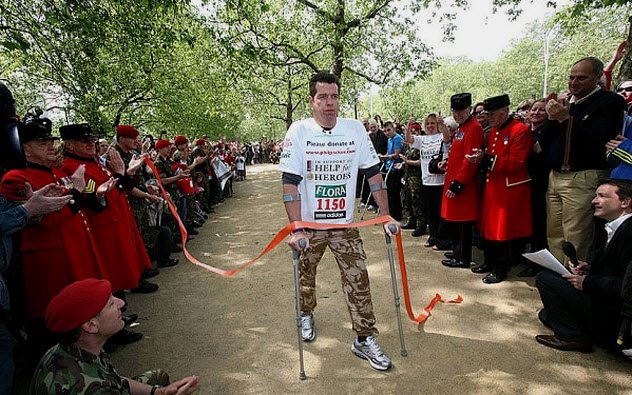
In 2008, British soldier Phil Packer was wounded in Basra, Iraq, during a rocket attack. Doctors told him that he would never walk again because of his spinal cord injury. However, thanks to Major Packer’s determined attitude, he proved his doctors completely wrong. A series of grueling training sessions, many of which lasted four to six hours per day, primed the military man for the London Marathon.
Around 50,000 steps later, covering over 42 kilometers (26 mi) of circuit, Packer triumphantly crossed the finish line. Doctors insisted that he only walk a maximum daily distance of 3 kilometers (2 mi). Propelled by nothing more than crutches and sheer willpower, it took him almost two weeks to complete the marathon. The exhausting training sessions had left their mark, though. Even before commencing the race, Packer was plagued by back problems.[1]
However, it was all worth it. Packer raised a staggering £637,000 for Help For Heroes—a charity for wounded servicemen and military vets.
His charitable pursuits did not end there. That same year, the major scaled El Capitan (aka The Chief) in Yosemite National Park. From base to summit, the granite rock formation is some 900 meters (3,000 ft).
In 2010, Packer completed another London Marathon. He also performed the National Three Peaks Challenge to raise money for the telethon show Sport Relief and founded his own charity, BRIT, for embattled youngsters. In 2015, yet again, this machine of a man managed to complete the London Marathon—this time in just 14 hours.
9 The 14 Cows
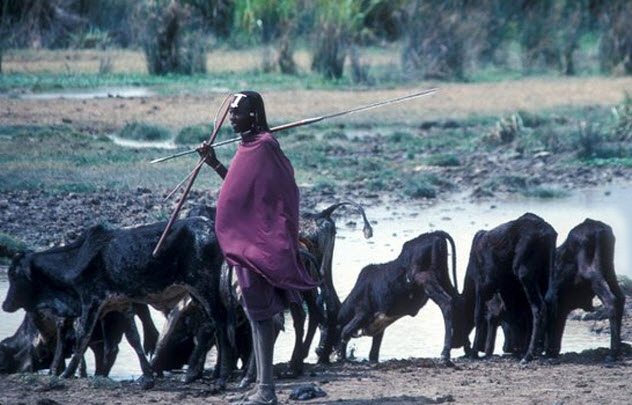
In the terrible aftermath of 9/11, a tribe in Kenya wanted to show its support for the United States and its people. The tribe, known as the Masai, donated one of its most precious resources—cows. They use the sacred animal to produce milk as well as fashion clothing and decorations. Cow dung is even put to use in waterproofing the tribe’s housing.
So, in 2002, the tribal elders gathered together and blessed 14 cows. The tribesmen held aloft signs that read, “To the people of America, we give these cows to help you,” as they danced around the baffled bovine. The herd was then handed over to William Brancick, the former US embassy deputy head in Kenya.[2]
This act was a major gesture of goodwill. The Masai, who know little of North American cities or their towering skyscrapers, bestowed one of their most prized possessions.
Unfortunately, logistical issues prevented the cows from journeying to America. Following years of indecision, US diplomats decided to leave the cows in Kenya and devise a scholarship program. The offspring of the cows funded 14 high school scholarships for local tribespeople. The scholarship program continues to this day.
8 Hairdresser To The Homeless
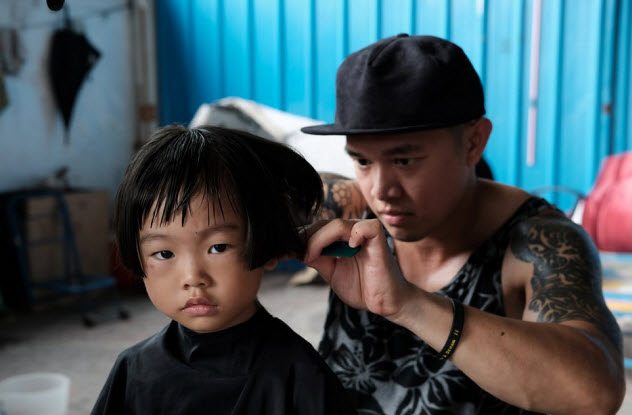
Mark Bustos is not only a hairdresser to the stars but also a hairdresser to the homeless. Bustos works for Three Squares Studio, one of the most lavish hairdressers in all of New York City. The famed establishment boasts a client list of top celebs, including Naomi Campbell, Chris Evans, and Aaron Paul.
On Sundays, the self-proclaimed “humanit-HAIR-rian” is often seen giving free haircuts to the homeless of Union Square. He has also traveled around San Diego looking for destitute Americans to help.
His Instagram feed is full of pictures of “before and after” haircuts along with stories of his many homeless clients. One picture shows a Texas man named Shane (aka Frankenstein).[3] Shane fell on hard times after moving to San Diego to find work. Bustos first met the destitute man when he was scrawling a message on some cardboard:
Just a few moments after I exited off of the freeway, Shane was right there, with a sign that had one word on it—one word that we all don’t ever want to feel . . . but know the feeling very well. One word that far too many human beings and living creatures die from every single day. His sign simply said, “HUNGRY.”
Bustos prides himself on boosting the confidence of those down on their luck. Some of his clients have even managed to get their lives back together and find work. He is reminded of one homeless man’s response to receiving a free haircut: “Do you know somebody who is hiring? I’m ready to get a job.”
The entrepreneur tells another story of Joe, whom he first met in Union Square. Joe was trying to find shelter from the elements when Bustos offered him a stylish new haircut. Years later, the pair was reunited under happier circumstances:
“This year, I visited the Harlem YMCA to provide haircuts for the men living there. Coincidentally, Joe was first in line for his haircut and was in a bit of a rush because he didn’t want to be late for work.”
7 Le Book Humanitaire
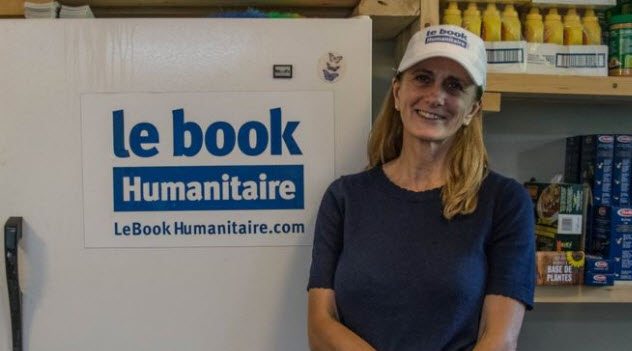
Winning the Quebecois lottery completely transformed Rachel Lapierre’s life. While most people would splash the cash on themselves, Rachel had more altruistic ambitions. Upon discovering her lottery win, she quit her job as a full-time nurse and followed her philanthropic dreams. Bagging a handsome 1,000 Canadian dollars ($780 USD) per week for life, Lapierre, a former beauty queen, used the funds to create her own nonprofit foundation.
The Quebecois woman created a Facebook page that emphasized the plight of Canada’s less fortunate. Members of the public were invited to donate Christmas baskets, blankets, clothes, school equipment, and bicycles.
However, the nonprofit does not survive on material possessions or money alone. A helper’s time is considered just as important: “It’s not only about material things. You might end up driving a cancer patient to a doctor’s appointment,” stated Lapierre.[4]
Set up in 2013, Lapierre’s nonprofit has spent around $70,000 on operations and galvanized thousands of volunteers. Much of the organization’s time, money, and donations go to improving schools, hospitals, and impoverished communities.
6 The Walking Man
James Robertson went beyond the call of duty to keep himself in a state of employment. The Detroit man walked a whopping 34 kilometers (21 mi) each day to get to and from work. Come rain, snow, cold, wind, or shine, James was always prepared for work and did not miss a single day.
James first came to the public’s attention when the Detroit Free Press ran a story on him. Readers heard the tale of the “Walking Man.” James would get up in the early hours of the morning to get a head start. He needed it. His morning walk, including a brief bus journey, would take around five hours to complete. He was destined to make this trek for a decade.[5]
Even so, James’s positive spirit kept him going. During evening shifts, he operates an injection-molding machine at Schain Mold & Engineering. He enjoys his work, loves his colleagues and boss, and never once complained about getting a mere two to three hours of sleep each night.
Hearing of James’s astonishing work ethic, a local student created a GoFundMe campaign to ease the man’s punishing commute. The target goal of $25,000, set by Evan Leedy, was a breeze. Over 13,000 people donated $350,000 within a week of the campaign commencement. At this point, not wanting to be greedy, James called for the campaign’s early close.
James was also helped by Blake Pollock, a bank vice president. The two first met when Pollock saw the factory worker trudging through the snow one morning on his way to work. Pollock would often stop and offer James a ride in his car. Pollock helped his friend select a new car (a Ford Taurus) and organized James’s new living arrangements. He then asked colleagues to set up a trust account for the GoFundMe donations.
In the end, the Suburban Ford of Sterling Heights dealership gave James his Ford vehicle for free.
The whole ordeal also highlighted the deficiencies in Detroit’s public transportation network. Thanks to the media attention, changes to the city’s transport links have improved the lives of other Detroiters.
5 No Good Deed Goes Unrewarded
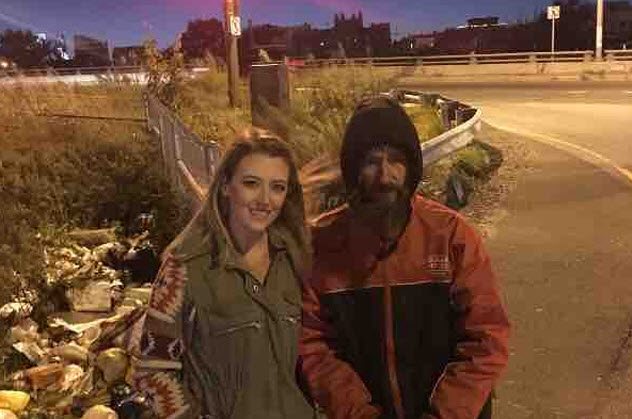
When a homeless man offered his last $20 to a woman stranded on the highway, he could not have anticipated the response.
Kate McClure stopped on Philadelphia’s Interstate 95 after running out of gasoline. Seeing McClure in a panicked state and without any money, Johnny Bobbitt Jr. offered to fetch some gas from a nearby station. The chivalrous man walked 3 kilometers (2 mi) to buy the fuel with his last $20. McClure says that Bobbitt’s generosity was completely unprecedented.
Bobbitt, a Marine vet and trainee paramedic, became homeless in 2016. After a job opportunity fell through, Bobbitt eventually encountered money problems, had minor run-ins with the law, and started taking drugs.[6]
McClure went on to make return trips to I-95, searching for Bobbitt to repay the money. She also gave him winter clothing, water, and extra cash to buy food. Not wanting her rescuer to become cold over the winter, McClure set up a GoFundMe page with her story.
The donations poured in thick and fast, surpassing the original $10,000 goal. Over 14,000 donations later, Kate’s campaign had raised more than $400,000. Some of the proceeds were used to put a roof over Bobbitt’s head. The remaining money was put into a series of trusts, which will be overseen by a financial adviser while Bobbitt searches for a new job.
McClure’s “pay it forward” approach looks set to continue as Bobbitt has already donated some of his money to another homeless man.
4 Paralyzed Man Forgoes Chance To Walk
In 2009, Daniel Black was badly wounded in a cycling accident. The British man was left paralyzed after a motorist collided with his bicycle. For years, Dan needed continuous assistance from his mother, who was forced to give up work to support him.
Over a number of years, a family friend helped to raise thousands of pounds to pay for Dan’s surgery. It was hoped that he would get the opportunity to walk again one day with the aid of stem cell therapy.
However, Dan would soon learn of a disabled boy named Brecon Vaughan. The five-year-old suffers from spastic diplegia cerebral palsy (aka Little’s Disease). The condition presents with increased muscle tone, leading to stiff muscles and coordination issues, particularly in the legs. Spastic diplegia occurs through damage to or abnormal development of the region of the brain that controls motor function.
When locals started raising money for young Brecon, Black felt compelled to contribute his own savings. He donated £20,000 to Brecon’s surgery, representing about a third of the overall campaign goal.[7]
Eventually, Brecon traveled to the United States for his surgery. He is now walking without the use of his walking frame and has the independence to go to school. Meanwhile, Daniel’s sacrifice was celebrated at the 2013 Pride of Britain Award. Incredibly, the humble man did not feel his donation was particularly noteworthy:
“I don’t see myself as worthy of an award because, to me, it wasn’t really anything that major. If more people did more sort of good things, then it wouldn’t be that big of a deal.”
3 Cassie Swirls

Wielding an arsenal of acrylic paints and glitter, a five-year-old girl is on a mission to help the less fortunate.
Cassandra Gee (aka Cassie Swirls) started painting when she was just three years old. The girl’s mother, Linda, painted for a hobby. She handed her daughter paints and a canvas in the hopes of keeping her little one busy. Cassie’s efforts left her mother stunned: “Oh, my God. That’s better than mine.”
Art lovers first heard of Cassie’s work on Facebook when Linda was researching art classes for her talented daughter. Buyers started lining up as Cassie’s paintings started to gain notoriety, and many of the paintings sold for hundreds of dollars.
Most kids would have pocketed the money and bought candy. But Cassie auctioned off her paintings and donated the proceeds to a slew of charities. The Royal Society for the Blind, the Trailblazer Foundation, and Cancer Council Australia are just a few of the charities to which Cassie Gee has donated money.
In March 2017, Cassie started giving coloring pens and pencil cases to impoverished children as part of the “Got A Pen?” campaign. The following month, she pledged $40 each month to the Bodhicitta Foundation, an NGO that aims to protect vulnerable women and children throughout India. Cassie then donated $100 each to a children’s hospital and a conservation charity for giant pandas.[8]
2 Stephen’s Story
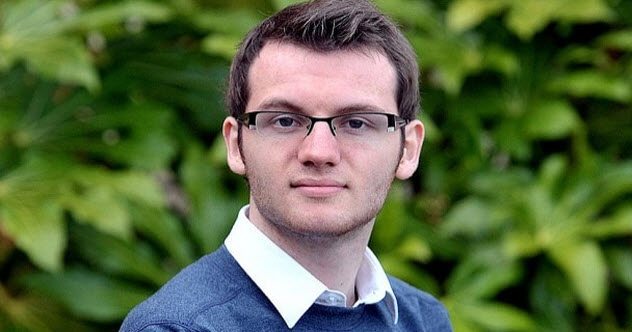
Stephen Sutton was just 15 when doctors told him that he had incurable bowel cancer. In 2013, with just over a year to live, Stephen made a “bucket list” of things to do before he died. He devised Stephen’s Story, his own blog, and published a list of 46 goals.
He played the drums at London’s Wembley Stadium in front of thousands of football fans. He also performed a tandem skydive, crowd-surfed in a rubber dingy at the Slam Dunk Festival, visited CERN, hugged an elephant, organized a charity soccer match, and took part in a flash mob. The list goes on.
However, the No. 1 spot on Stephen’s bucket list would propel him to notoriety. He pledged to raise £10,000 for the Teenage Cancer Trust. The straight-A student harnessed his keen understanding of social media to promote his cause. Suffice it to say, his lofty target was quickly surpassed. With the help of a few celebrities, Stephen raised a staggering £3.2 million.[9]
In 2014, Stephen died. His mother, Jane Sutton, accepted her son’s MBE (Most Excellent Order of the British Empire). She continues her son’s incredible legacy, raising money for the Teenage Cancer Trust. Jane successfully completed the 2015 London Marathon and helped organize the release of a charity single, “Hope Ain’t a Bad Thing.”
1 Hailey’s Harvest
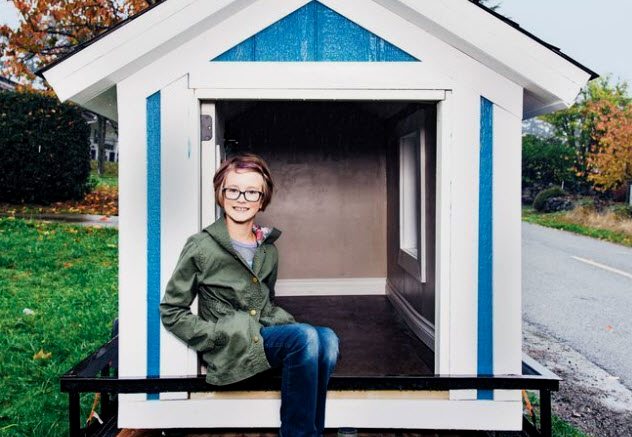
At the tender age of five, most youngsters are playing video games or nagging their parents for candy. Hailey Fort is very different. The Washington girl saw a man sleeping rough and decided she wanted to do whatever she could to help.
Fort’s Facebook page, “Hailey’s Harvest,” chronicles her many charitable pursuits. Hailey started out discussing her passion for growing food, much of which she donated to the homeless. In a 2014 post, she describes Billy Ray, a man who had been homeless for eight years:
“This is Billy Ray. I have known him for three years. He was the first person I donated food to from my garden. He is a double amputee from his time in the military. He has been homeless off and on for eight years—that is my whole life. He is very nice.”[10]
Hailey’s page is full of similar “Donation Day Stories.” She would set goals of how much food she could harvest before handing it over to the homeless. When winter was approaching, Hailey and her mother often encouraged Kitsap County residents to donate warm clothes and sleeping bags. The pair would then drive around in their van—stuffed to the brim with coats, mittens, toiletries, water, and snacks—and give out donations to the cold and hungry.
Many of Hailey’s street-bound friends were veterans. Upon learning that 40 percent of the male homeless population had served in the armed forces, Hailey made a point of honoring Veterans Day.
In 2015, Hailey hit the national headlines. After reading an NPR article about homelessness, she vowed to build a dozen homeless shelters. A GoFundMe campaign was launched to support the noble project, raising over $60,000.
Using wooden pallets donated by Lowe’s, Hailey got to work. Her first mobile shelter featured a door, windows, curtains, insulated walls, vinyl flooring, roof tiles, and drip rails. Hailey constructed every part of the house while her grandfather, a contractor, oversaw the ambitious build. She then worked with the Housing and Homelessness Program to find a suitable location for the miniature home.
To this day, Hailey continues to produce hundreds of pounds of food for the homeless. The young girl’s garden has now quadrupled in size.
Read about more astonishing acts of charity on 10 Great Philanthropists Who Are Kids and 10 Refreshing Stories Of Rich People Who Gave Their Fortunes Away.








